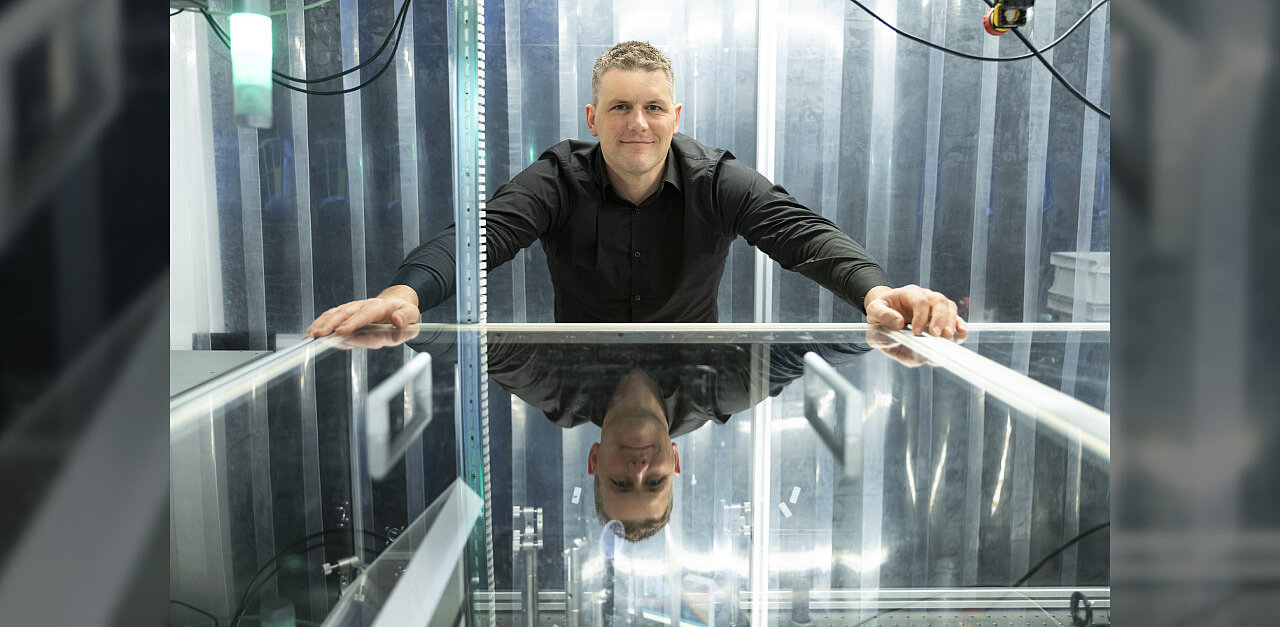After working in the attoworld team for a long time, Ioachim Pupeza moved to Jena a few years ago. There, he set up his own research group at the Leibniz Institute of Photonic Technology. He then received a call from the Rheinland-Pfälzische Technische Universität Kaiserslautern-Landau, where he now holds the Chair of Optical Quantum Metrology. However, his connection to the attoworld team and its research program still exists. And so, you can still sometimes see him in Garching. In this interview, Ioachim talks about his plans and his journey all over Germany.
You have been a professor at the Rheinland-Pfälzische Technische Universität Kaiserslautern-Landau for some time now. What ultimately brought you to Kaiserslautern?
The offer but also the challenge of establishing a Chair of Experimental Physics with an ambitious research program at the RPTU in conjunction with an applied-research group at the Fraunhofer ITWM was certainly particularly appealing. However, I also very much enjoy teaching and RPTU offers excellent opportunities for that. Last but not least, moving to the Palatinate with my family has allowed me to get to know this region, which we all like very much.
What are your current research focuses?
Over the next few years, I would like to pursue some of the directions that my research group at attoworld has initiated. To this end, I would like to continue to think about and try out some ideas that are at different stages of development. It's always about the control over light, the development of technologies that measure light with a high sensitivity, and the application of optical metrology to biomedical questions. One topic that is particularly close to my heart is the so-called phenotyping of human cells, without chemical labeling and exclusively by optical means.
What are you focusing on in this project?
As part of an ERC Consolidator Grant that I recently received, at Leibniz IPHT and together with the University Hospital in Jena want to investigate the extent to which the health status of intensive care patients can be monitored based on the development of the distribution of immune-cell phenotypes. Another application that we are currently pursuing with infrared spectroscopy is the breath-gas analysis of intensive care patients.
These are ambitious goals...
Indeed, they are. Such undertakings require a broad spectrum of expertise. We try to cover this by conducting the necessary basic research in optics and photonics at the Chair of Optical Quantum Metrology at RPTU. At the Fraunhofer ITWM, we work closely with industry, particularly with regard to technological developments in this optical measurement technology. Together with the Leibniz-IPHT, we are pursuing the application of these new approaches in biology and medicine. You can find more information at lightwavelab.de.
You are still in close contact with the attoworld team. Is there any overlap in your scientific work and are there collaborations?
With field-resolved infrared spectroscopy, we have jointly demonstrated great potential for molecular vibrational spectroscopy in recent years. However, there is still an incredible amount of work to be done in order to exploit this potential to the fullest and to understand what we can contribute with our ideas and our understanding of photonic measurement technologies in biology and medicine. That is why we continue to work closely together.
We met when you were a PhD student in Ferenc's team at LMU. A lot has happened in your scientific career since then. Do you have any advice for young researchers that you can pass on from your own experience?
In addition to hard work and patience, which are absolutely necessary to unlock nature's secrets, luck also plays a major role. That is why it's probably impossible to formulate a recipe for success. In my case, I was lucky to have a doctoral supervisor and mentor in Ferenc who believed in me, from whom I learned an enormous amount of useful lessons and who inspired me greatly. Building on this experience, my advice would be to always try to be surrounded by scientists from whom you can learn. Another important piece of advice is to be very persistent. The most exciting research is when you venture down a path that no one has gone down before and you don't know where it will lead. And for an adventure of this sort, it makes sense to choose experienced and trustworthy companions.
Interview: Thorsten Naeser
Foto: Sven Döring
Internet: https://lightwavelab.de/
